Introduction to Satonda Island
Satonda Island, a captivating destination located in the Komodo National Park area, lies to the southeast of Sumbawa Island in Indonesia. Renowned for its breathtaking landscapes and vibrant ecosystems, this small volcanic island presents an ideal getaway for those in search of adventure and natural beauty. Surrounded by the crystal-clear waters of the Sunda Sea, Satonda Island offers a unique combination of pristine beaches and dramatic terrain, making it a hidden gem that remains relatively unexplored by mass tourism.
The island is primarily known for its remarkable geological features, including the large crater lake situated at its center. The lake, often referred to as Satonda Lake, is a significant highlight for visitors and contributes to the island’s charm. The surrounding cliffs are home to various endemic flora and fauna, adding to the island’s ecological diversity. As you wander along the rocky paths, visitors are often greeted by a picturesque landscape that varies from lush green hillsides to steep cliffs adorned with vibrant coral reefs beneath, making it a truly enchanting setting.
Travelers seeking an off-the-beaten-path experience will find satisfaction in exploring Satonda Island’s hidden treasures. Activities such as snorkeling, hiking, and birdwatching are readily available, allowing visitors to immerse themselves in the island’s natural wonders. The refreshing tranquility found here creates an atmosphere perfect for relaxation, and the rich marine life just off the coast adds to the allure for nature enthusiasts. The untouched beauty and serene environment position Satonda Island as a top contender for those eager to experience Indonesia’s incredible landscapes away from the bustling crowds of more popular destinations.
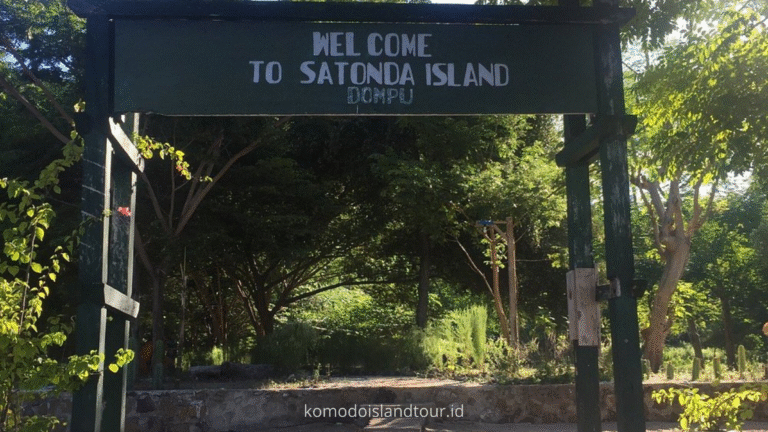
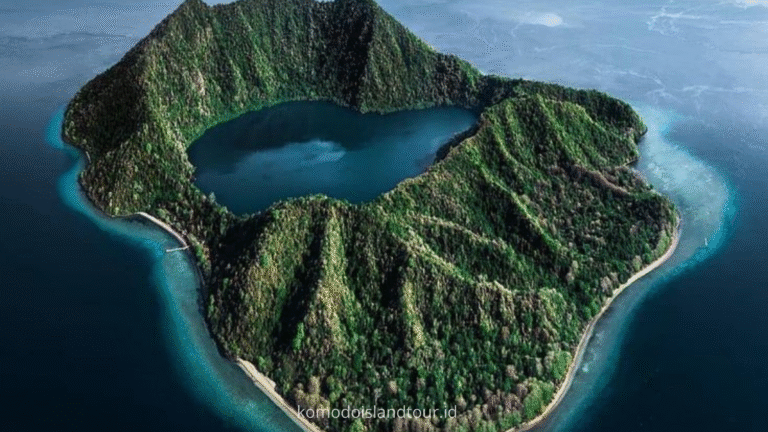
The Stunning Volcanic Lake and Natural Features
Satonda Island, a hidden gem in Indonesia, is renowned for its extraordinary volcanic lake, which serves as a prime example of nature’s grandeur. Formed by volcanic activity thousands of years ago, the lake occupies a caldera that was created during an explosive eruption. This geological process has resulted in a closed basin that is now home to remarkably high salinity levels. The lake’s salinity is significantly higher than that of seawater, leading to a unique ecosystem that differs from typical freshwater habitats.
The high salinity of the volcanic lake has cultivated an array of specialized flora and fauna that have adapted to thrive in these unique conditions. Various salt-tolerant plants line the shores, providing shelter and nourishment to the diverse wildlife that inhabits the area. Numerous aquatic species have also adapted to the saline waters, showcasing resilience and evolutionary innovation. The lake serves as an essential habitat for migratory birds, lending to its status as a critical ecological spot in the region. Observers can witness these birds taking solace along the banks of the lake, where they find ample food resources.
Moreover, the breathtaking scenery surrounding the volcanic lake adds to the island’s allure. The azure waters contrast with the lush greenery of the island’s rainforests, creating a picturesque landscape that captures the heart of every visitor. Hiking trails and observation points offer stunning panoramic views, allowing travelers to immerse themselves in the island’s natural beauty. Additionally, the tranquility of the lake enhances its appeal, making it a prime destination for those seeking peace and solitude amidst nature. Satonda Island stands as a perfect illustration of Indonesia’s diverse ecosystems, with the volcanic lake being its crown jewel.
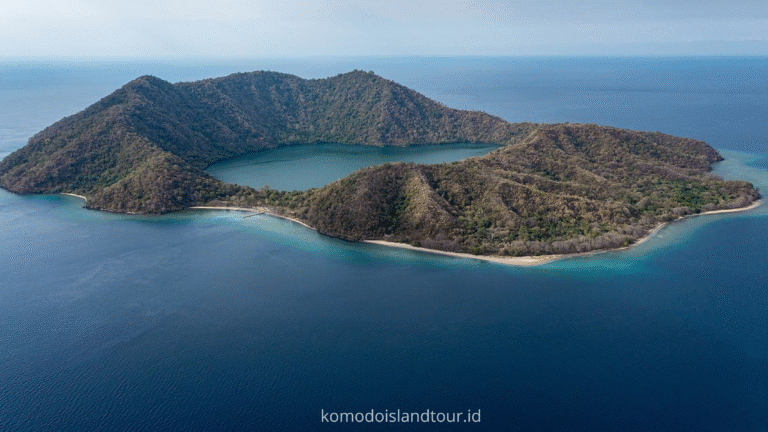
Ecological and Geological Significance
Satonda Island, located in the West Nusa Tenggara province of Indonesia, stands out for its remarkable ecological and geological significance. The island’s unique landscape is a product of its volcanic activity, which has played a pivotal role in shaping not only the physical characteristics of the land but also the rich biodiversity found within its ecosystem. As a stratovolcano, the island features a caldera lake that is a striking reminder of its geological history. This volcanic formation has created a habitat that supports a diverse array of flora and fauna, many of which are endemic to the region.
The island is enveloped in lush vegetation, with tropical forests that harbor an impressive variety of plant species. These forests not only beautify the landscape but also serve as crucial habitats for numerous animal species. Birds, reptiles, and insects thrive in this environment, contributing to the island’s ecological balance. Additionally, Satonda’s surrounding waters are rich in marine life, providing an essential ecosystem for various fish species and other aquatic organisms. This biodiversity is vital for maintaining the health of the local environment and supports traditional fishing practices that have sustained local communities for generations.
Moreover, Satonda Island’s geological significance extends beyond its immediate surroundings. It serves as a natural laboratory for scientists studying volcanic activity and island biogeography. Research conducted on Satonda can offer insights into volcanic processes and the colonization of species on islands, shedding light on broader ecological patterns and evolutionary trends. Such studies underline the island’s importance in understanding Earth’s geological history and the interconnectedness of life. As both an ecological haven and a geological treasure, Satonda Island exemplifies the delicate balance between nature’s forces and the thriving life they support

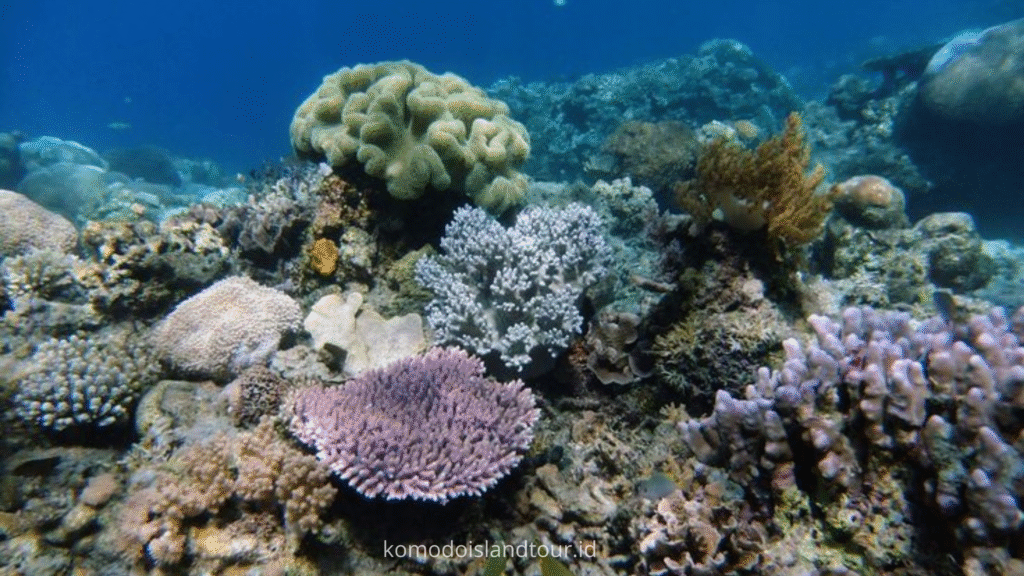
Activities for Visitors on Satonda Island
Satonda Island, with its stunning landscapes and vibrant marine life, provides a plethora of activities for visitors seeking adventure and exploration. One of the primary activities is hiking. The island boasts several well-maintained trails that cater to varying skill levels. Among the most popular is the trek to the viewpoint at the top of a hill, which rewards hikers with panoramic views of the island’s lush greenery and the surrounding ocean. This leisurely hike allows individuals to appreciate the island’s unique flora and fauna, providing an immersive experience in nature.
Another significant attraction on Satonda Island is its remarkable snorkeling spots. The crystalline waters surrounding the island are teeming with life, making it a paradise for underwater enthusiasts. Popular snorkeling locations include the coral reefs near the shore, where visitors can observe an array of colorful fish and other sea creatures. The calm waters and vibrant coral gardens enhance the snorkeling experience, offering clear visibility and a chance to witness the rich biodiversity of marine life. It is advisable for visitors to bring their own snorkeling gear or rent equipment available in nearby accommodations.
A unique feature of Satonda Island is its volcanic lake, which is another must-see for tourists. This lake, nestled within the island’s interior, offers a tranquil and picturesque environment. Visitors can explore the lake by taking a short trek around its perimeter, enjoying the peaceful ambiance and the mesmerizing view of the surrounding landscape. Swimming in the lake is an option for those seeking a refreshing dip amidst the stunning backdrop. Overall, Satonda Island is an ideal destination for visitors excited about hiking, snorkeling, and immersing themselves in natural beauty.
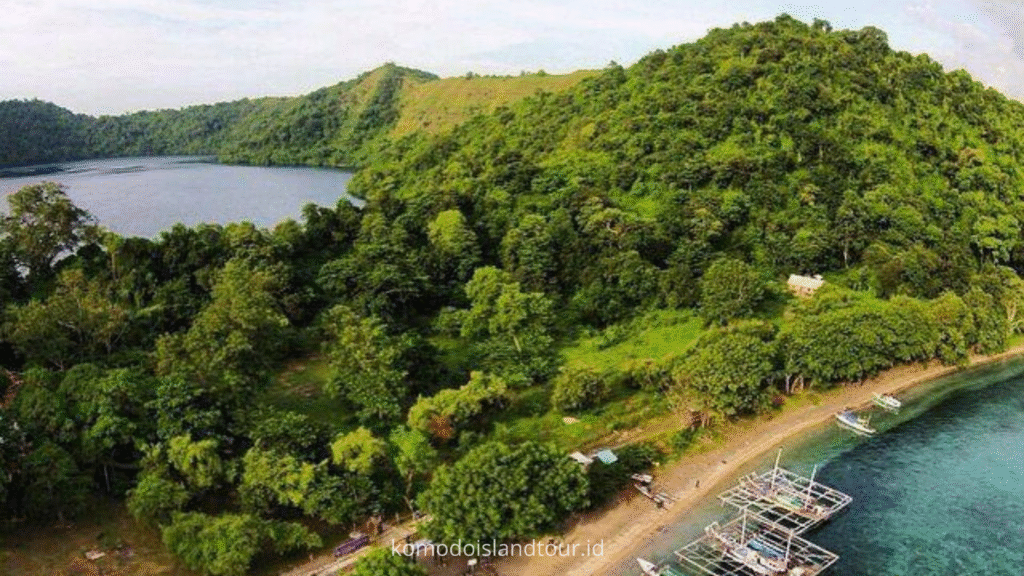
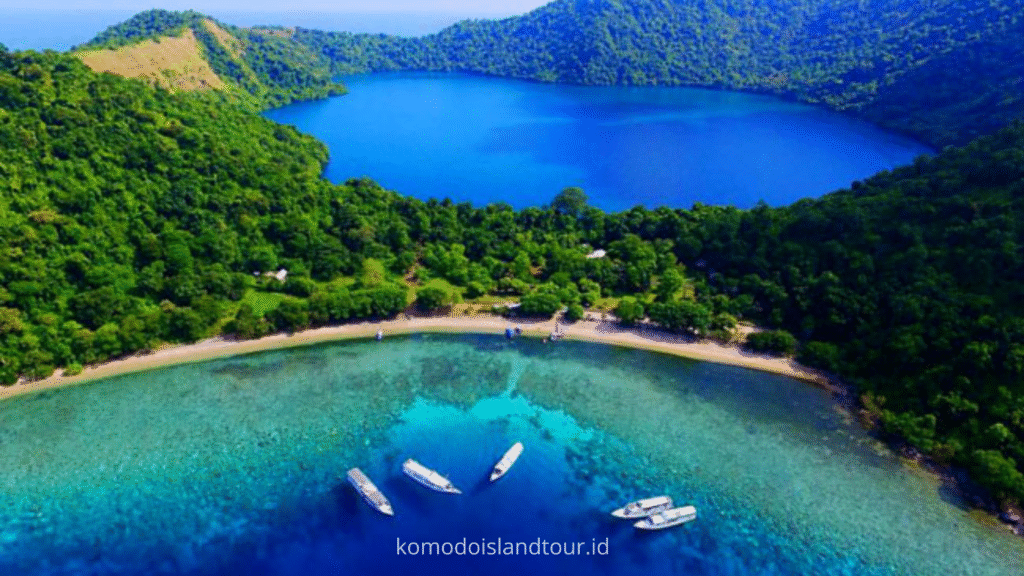
Getting to Satonda Island
Reaching the unspoiled expanse of Satonda Island requires careful planning, particularly due to its remote location within Indonesia’s stunning archipelago. The journey typically begins at the nearest major city, Bima, located on the island of Sumbawa. Bima is well-connected by air, with regular flights departing from Bali or Lombok. Once you land in Bima, travelers can hire a taxi or use local transportation to reach the harbor of Sape, which is approximately 60 kilometers away.
From Sape, visitors can board a traditional wooden boat known as a “perahu” or opt for a speedboat service that operates specifically to connect to Satonda Island. The boat ride generally takes about 30 to 45 minutes, offering scenic views of the surrounding waters and islands along the way. It is advisable to check the schedules in advance as ferry services can vary based on weather conditions, and it may be necessary to book tickets ahead of time, especially during peak travel seasons.
Aside from traditional ferry services, engaging the assistance of local guides can enhance your travel experience. These guides can help arrange transportation and provide valuable insights into the island’s attractions and cultural significance. Additionally, some tour companies offer packaged trips that include transport to and from Satonda Island, as well as included activities such as snorkeling and hiking. Many travelers also choose to join open trip tours, which provide an affordable and convenient way to explore Satonda Island with fellow adventurers, including organized transfers and guided activities.
For those contemplating a visit, it is crucial to prepare adequately. Check weather forecasts before your journey, pack essential supplies such as water and snacks, and confirm your travel arrangements ahead of time. By taking these steps, you can ensure a smooth and enjoyable trip to Satonda Island, where tranquility and natural beauty await.
Travel Tips for Visitors to Satonda Island
When planning a trip to Satonda Island, timing your visit can greatly enhance your experience. The ideal seasons to explore this hidden gem of Indonesia are during the dry months, typically from April to October. During this period, the weather is more favorable, with less rainfall, providing better conditions for outdoor activities such as snorkeling and hiking. The marine life is also more vibrant during these months, offering visitors magnificent underwater views.
As you prepare for your journey, packing the right items is essential to ensure a comfortable and enjoyable stay. Essential gear includes snorkeling equipment to fully appreciate the island’s rich marine biodiversity. Visitors should also consider bringing reef-safe sunscreen to protect their skin while being environmentally conscious. Comfortable shoes are crucial for exploring the island’s trails, as some areas may require trekking. Additionally, it is wise to carry sufficient water supplies and snacks, as local facilities may be limited. A lightweight backpack would be ideal for holding these essentials.
Respecting the local environment is paramount when visiting Satonda Island. As a tourist, you have the responsibility to minimize your impact and support conservation efforts actively. Visitors are encouraged to stick to marked trails during hikes to prevent trampling over delicate flora. When snorkeling or swimming, maintain a safe distance from coral reefs to avoid damage. It is also important to refrain from collecting seashells or marine organisms, as these practices can disrupt the local ecosystem. Engaging with local conservation initiatives, such as beach clean-ups, can further contribute to preserving the island’s natural beauty for future generations.
Conservation Efforts and Environmental Impact on Satonda Island
Satonda Island, with its pristine landscapes and rich biodiversity, faces various environmental challenges that necessitate ongoing conservation efforts. Recognizing the intrinsic value of its ecosystems, local authorities and environmental organizations have initiated several programs aimed at preserving the island’s natural beauty and ecological integrity. Key projects focus on habitat restoration, waste management, and species protection, ensuring that the island’s unique flora and fauna can thrive sustainably.
The conservation initiatives on Satonda Island prominently include the establishment of protected marine areas, which help safeguard critical marine habitats from overfishing and pollution. These efforts are complemented by educational campaigns aimed at both residents and visitors, raising awareness about the ecological significance of the island and encouraging sustainable practices. Such initiatives play a critical role in mitigating the environmental impact associated with tourism, which can inadvertently harm the delicate ecosystems of the island.
Despite these positive strides, Satonda Island is not immune to potential threats. Climate change poses a significant risk, with rising sea levels and increased storm frequency affecting coastal areas and marine habitats. Furthermore, the influx of tourists can lead to habitat degradation if not appropriately managed. To combat these threats, it is imperative that visitors engage in responsible tourism practices. This includes adhering to guidelines set by local conservation authorities, minimizing waste, and respecting wildlife habitats.
Travelers can have a meaningful impact by participating in conservation activities during their stay. Whether through organized beach clean-up events or contributing to local eco-friendly projects, visitors can help support the sustainability of Satonda Island. By being mindful of their actions, tourists can play a crucial role in safeguarding this hidden gem for future generations to appreciate and enjoy.
Cultural Insights and Local Community of Satonda Island
Satonda Island, a captivating destination located in Indonesia, is not only renowned for its natural beauty but also for its rich cultural heritage. The local community plays a vital role in maintaining the island’s traditional practices and ensuring visitors leave with a deeper understanding of Satonda’s unique culture. The island is predominantly inhabited by a small but vibrant community whose lifestyle is intricately woven with the surrounding environment, emphasizing sustainable practices and respect for nature.
The residents of Satonda Island uphold several customs and traditions that are reflective of their historical roots. Among these, traditional fishing practices stand out, as local fishermen still rely on age-old methods passed down through generations. This connection to their cultural heritage fosters a strong sense of identity among the inhabitants while presenting an opportunity for visitors to learn about local techniques and the importance of sustainability in fishing practices.
Community involvement in tourism is increasingly becoming a key aspect of Satonda’s development. Local residents actively participate in guiding tours, sharing their knowledge about the island’s flora and fauna, and providing insight into their daily lives. Such interaction enhances visitors’ experiences and allows the community to benefit economically from tourism while ensuring the preservation of their cultural heritage. Efforts are made by the local authorities to educate tourists on respectful engagement, encouraging them to embrace local customs and practices without imposing outside values.
Engaging respectfully with the local residents of Satonda Island can significantly enrich one’s visit. Tourists are encouraged to participate in community events, support local artisans, and indulge in traditional culinary experiences. By fostering this mutual respect and understanding, both the visitors and locals can create meaningful connections while celebrating the cultural diversity that makes Satonda a hidden gem in Indonesia.
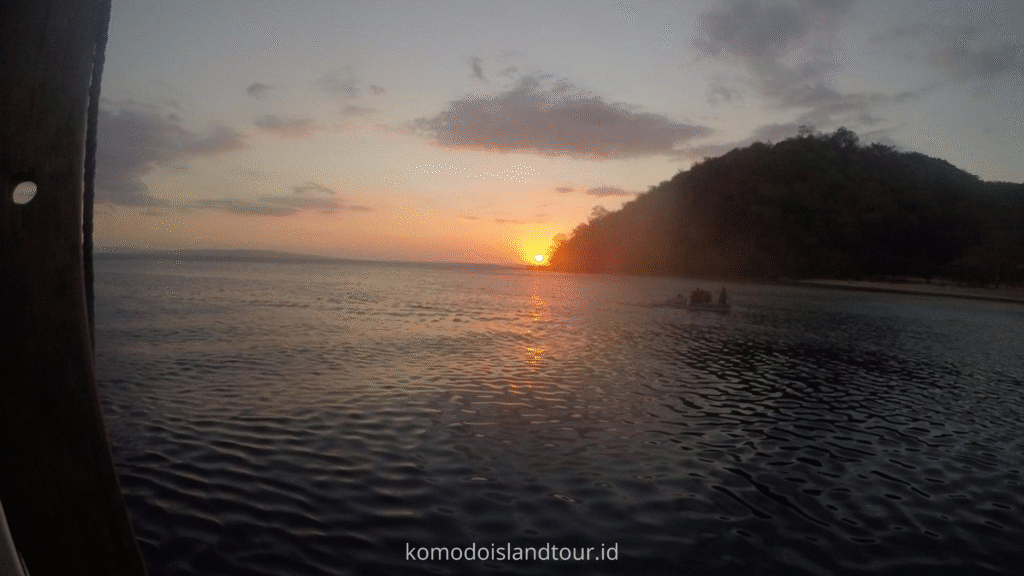

Conclusion: Why Satonda Island Should Be on Your Travel List
Satonda Island, a remarkable haven nestled in the heart of Indonesia, truly stands out as an extraordinary destination for intrepid travelers. The island boasts a rich tapestry of natural beauty, cultural significance, and unique experiences that readily invite exploration. One cannot overlook the enchanting landscapes that include lush greenery, pristine beaches, and stunning volcanic formations, each contributing to a serene atmosphere that calms the mind and rejuvenates the spirit.
The island’s most notable feature is the stunning crater lake that captivates visitors with its crystal-clear waters and vibrant marine life. Here, one can engage in various water activities such as snorkeling and swimming, providing a perfect opportunity to connect with nature. The underwater scenery is nothing short of breathtaking, making it ideal for both novice and experienced divers eager to witness the colorful marine biodiversity.
Moreover, Satonda Island offers a unique blend of tradition and hospitality. Travelers can immerse themselves in the local culture by interacting with the friendly residents and learning about their customs and history. One of the delightful experiences includes witnessing traditional ceremonies that allow visitors to appreciate the island’s rich heritage further. As an isolated and tranquil destination, it provides a welcome escape from the fast-paced modern life and an opportunity to unwind in complete serenity.
In conclusion, Satonda Island is not only a hidden gem but also a multifaceted destination that enriches the travel experience in countless ways. With its captivating landscapes, engaging activities, and warm cultural exchanges, it is a must-visit location that deserves a prominent spot on your travel itinerary. By choosing to visit Satonda Island, one embarks on a journey that promises lasting memories and profound experiences, marking it as a true treasure of Indonesia.
